

The Chukchi Sea is a part of the Arctic Ocean. Known by different names like the Chuuk Sea and the Sea of Chukotsk, it is also referred to as a marginal water body of the Arctic.
It lies off the northwestern Alaskan coast and is among the world’s most productive marine ecosystems.
On the west, the sea is surrounded by Long Strait, which lies close to Wrangel Island. In the east, it is enclosed by Point Barrow, Alaska. The southern limit is formed by the Bering Strait, which connects the Chukchi Sea to the Bering Sea and the Pacific Ocean.
Interestingly, it is also one of the seas in the world which is traversed by the International Date Line. It passes from northwest to southwest and avoids Wrangel island and Chukotka on mainland Russia.
Let us explore some more amazing Chukchi Sea facts in this article.
The Chukchi Sea covers 595,000 square kilometres or 230,000 square miles. It has an average depth of about 77 metres or 253 feet and is characterised by shallow waters.
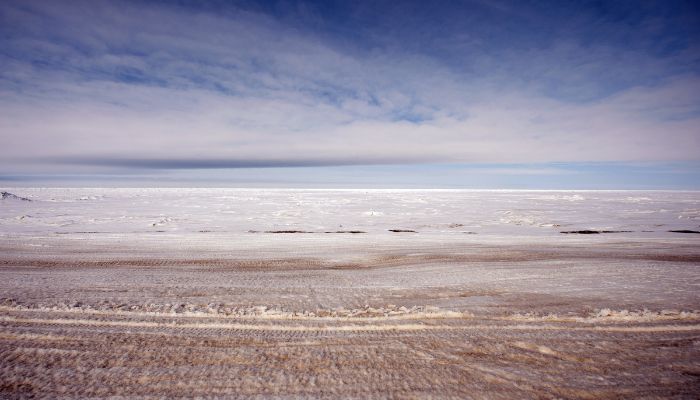

The water of the Chukchi Sea is saltier compared to the other seas of the Arctic. This is because of the low runoff, about 13 cm or 6 inches. The salinity level is controlled by the rivers that flow into the Sea, such as the Kobuk, Noatak, Amguema etc.
The Chukchi Sea is named after the Chukchi people. They are native Siberian people who originally lived in the Chukchi Peninsula, on the coastline of the Chukchi and the Bering Sea of the Arctic. They speak the Chukchi language, and most are now literate and fluent in Russian.
There are two kinds of Chukchi, one who lives on the coast while others who live in the interiors. The former were skilled fishers and hunters of sea mammals, while the latter were reindeer herders.
The Chukchi who reside on the Chukchi sea coast still engages in traditional fishing, walrus hunting and whaling. Chukchi people believe every object, living or non-living, has a spirit, be it harmful or benevolent.
In ancient times, the Chukchi practised a hunter-gatherer lifestyle. Today, the Chukchi have retained some of their traditions.
However, after the Soviet Union collapsed, the government-run farmlands were privatised, significantly impacting the people’s life and economy in Chukotka. Many people lost their lands, and the rural Chukchi, living inland in villages, had to rely on humanitarian aid.
A major geological feature of the Chukchi Sea lying off the Alaskan coast is the Hope Basin. It is about seven hundred kilometres long or 430 miles, extending from the outward continental shelf of Seward Peninsula towards the west till the coast of Chukotka, going all the way to Wrangel island.
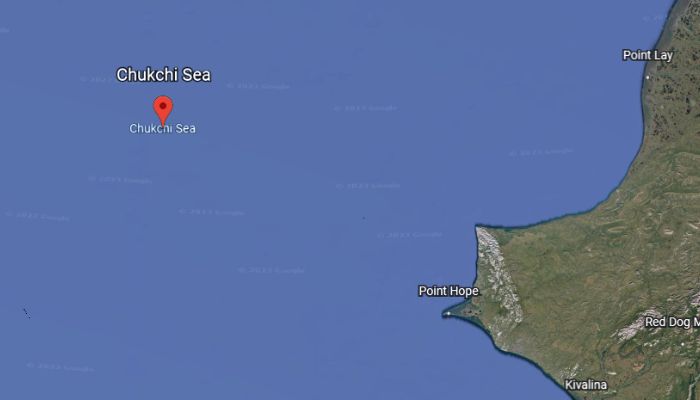

Approximately 56% of the Hope Basin is less than 50 metres deep, or 160 ft. It is surrounded by the Herald Arch from the northeast. Named after Herald Island, this arch is a basement uplift created by faulting during the Cretaceous period.
Approximately half of the polar bears of America, about 2000 animals, call the Chukchi sea their home. These predators depend on the sea ice to hunt, rest and breed. In recent years the ice has been receding, mainly during summer, had led to polar bears denning in coastal areas.
The melting icebergs have decreased the area for polar bears to hunt their favourite seals. It has also forced them to go further for hunting and finding denning places.
If the present trends continue, then about two-thirds of the world’s polar bears and all found in Alaskan waters will die by 2050, per the US geological survey reports.
Several studies have reported increased incidences of polar bear drownings, fewer survival rates of their cubs, small bodies, and cannibalism due to lack of food. This has made them a threatened species that can become extinct in the future if the ice continues to recede due to an increase in global temperatures.
The Chukchi Sea shelf has a 50-mile-long corridor used by the Beluga whales, bowhead whales, pacific walrus, and bearded seals for their annual migrations.
Ice seals like ribbon and bearded and spotted seals are abundant in the Chukchi Sea. They are aptly called so since they depend on the ice caps for hunting, resting, giving birth and nursing their young.
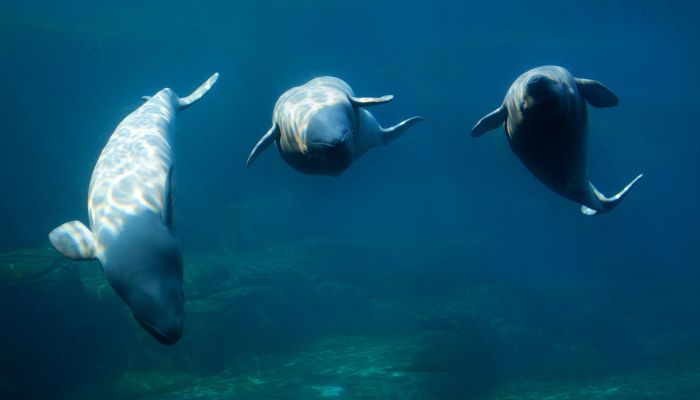

Apart from seals, vast walruses can be seen in the sea, especially during the summer. However, since the ice retreated in recent years beyond the continental shelf, over 10,000 walruses lost their lives as they crowded the shores of Alaska and Russia while stepping over each other. Their populations have declined considerably in the last four to five years.
Many species of whales, including the endangered fin whales, humpbacks, gray whales, feed in the shallow waters, while the beluga whales feed and nurse their young near the Kasegaluk lagoon, close to Point Lay.
The Chukchi Sea is quite different and unique from other world seas and oceans. It plays a crucial role in regulating global ocean circulations and climate.
Ice is an essential feature of the Chukchi Sea. The sea is fed by many rivers and has nutrient-rich waters that allow for the proliferation of phytoplankton, the base of its food chain. Many crustaceans and molluscs also flourish in the deep waters of the sea, providing plenty of food to walruses, seals, whales and deep-diving birds.
Navigation in the Chukchi Sea is possible only between July and October. Even during this period, ships must pass eastwards and westwards from the Bering Strait and southwards along the coast of Siberia, which has ice-bearing currents. The sea is mainly frozen for the rest of the year, making it difficult to pass through.
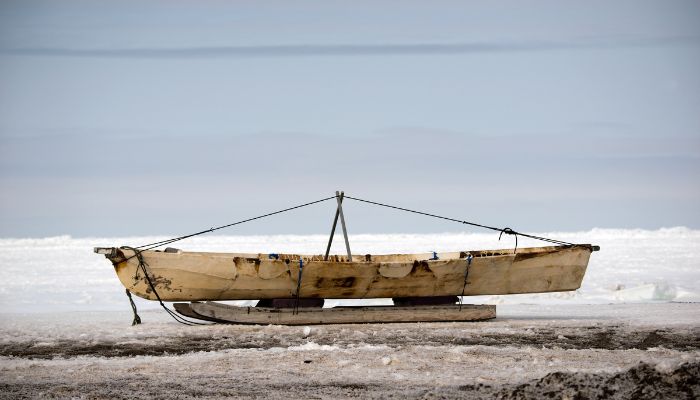

Ships can get trapped in the ice if they try to cross the sea during peak winter months. One such incident happened in 1878 when a steamship called Vega was stuck in ice for the entire winter. Again, in 1913 the crew of Karluk left it as it drifted on the ice. Finally, it was hit and crushed by a giant ice cap close to Herald island and submerged in the icy waters. Twelve of its crew members were found nine months later.
In 1934, Chelyuskin drifted into the ice and drowned near Kolyuchin island.
A shocking discovery was made by scientists in the Chukchi Sea. Scientists were stunned to find a massive 100 km long bloom of phytoplankton under the icy waters off northern Alaska in July 2012.
Even intact ice had some algae growing beneath it, going many metres down. This was unexpected as, till then, it was thought to be unbelievable. It was previously assumed that ice restricted the necessary sunlight from reaching the depths and prevented marine flora growth.
However, in this case, four times more phytoplankton was seen below the ice compared to the nearby ice-free water bodies.
The researchers concluded that the melting ice works like a magnifying glass that focuses sunlight into particular areas, creating conditions for a huge phytoplankton bloom like the one in the Chukchi Sea.
Another interesting fact is that marine phytoplankton also contributes to oxygen on our planet as much as plants on the land.
The Chukchi Sea connects the far east port to the Pacific port of America.
The ports in the Chukchi Sea include- Uelen, Russia; Shishmaref harbour; Wainwright harbour; Red Dog harbour and Barrow harbour.
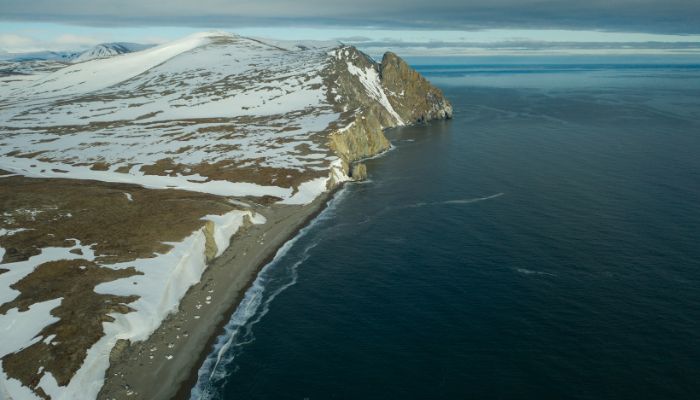

Shishmaref lies on Sarichef island, north of the Bering Strait. It is a village community surrounded by Beringian National Park. It has a well-developed harbour, and at the beginning of the 19th century, it became a major centre of supply for the gold mining companies which began exploration in the south.
Uelen port lies in the Chukotsky district in the Russian Far East. It is used for fishing by villagers and handles general cargo and essential items. It handles oil, construction material, timber, foodstuff etc.
When the port cannot be used during storms, the cargo is unloaded at Dezhnevo. From here, it is carried to Uelen in trucks.
The Chukchi Sea holds massive natural gas and oil reserves, holding enormous commercial value. It is estimated to contain 30 billion barrels of oil and natural gas. Hence, since this information came out, companies have been competing to get a lease in the region.
Since 2008 many international companies have come forward to get extraction rights. In 2015, the Obama government approved Shell Oil to drill in its shallow waters up to 43 m deep. However, a year later, the company decided to end its exploration stating exorbitant costs and decreasing prices of oil.
You may also like to read-
Disclaimer: The author’s views expressed in this article do not necessarily reflect the views of The Marine Learners. Data and charts, if used in the article, have been sourced from available information and have not been authenticated by any statutory authority. The author and The Marine Learners do not claim it to be accurate nor accept any responsibility for the same. The views constitute only the opinions and do not constitute any guidelines or recommendations on any course of action to be followed by the reader.
The article or images cannot be reproduced, copied, shared or used in any form without the permission of the author and The Marine Learners.










We believe that knowledge is power, and we’re committed to empowering our readers with the information and resources they need to succeed in the merchant navy industry.
Whether you’re looking for advice on career planning, news and analysis, or just want to connect with other aspiring merchant navy applicants, The Marine Learners is the place to be.